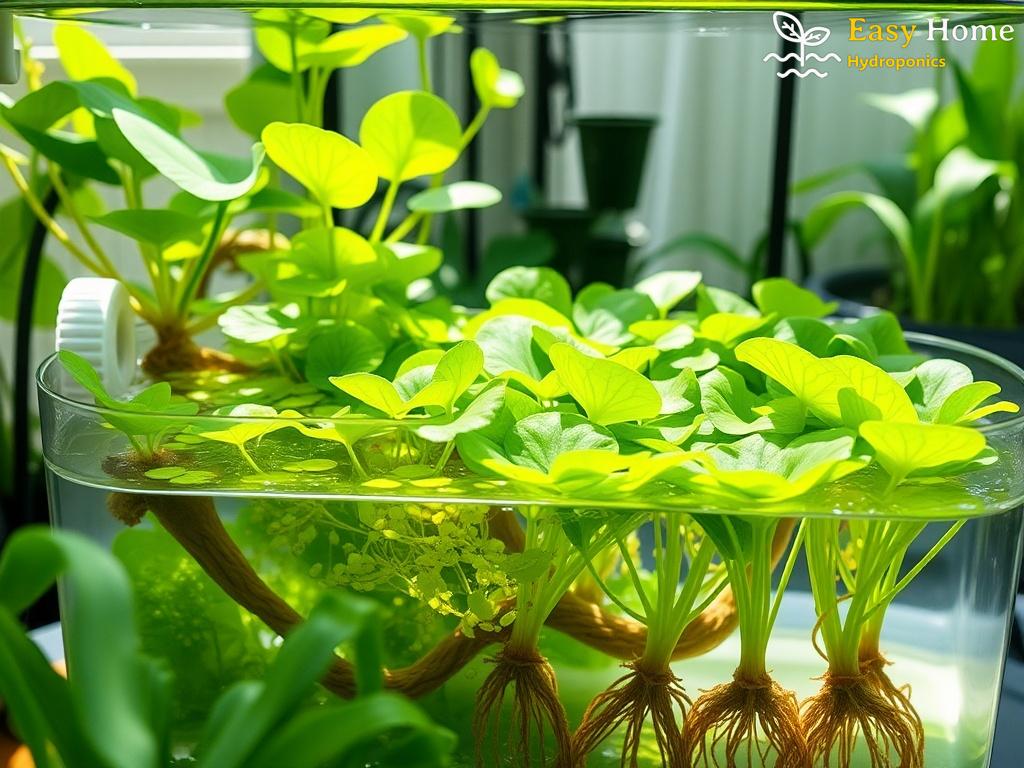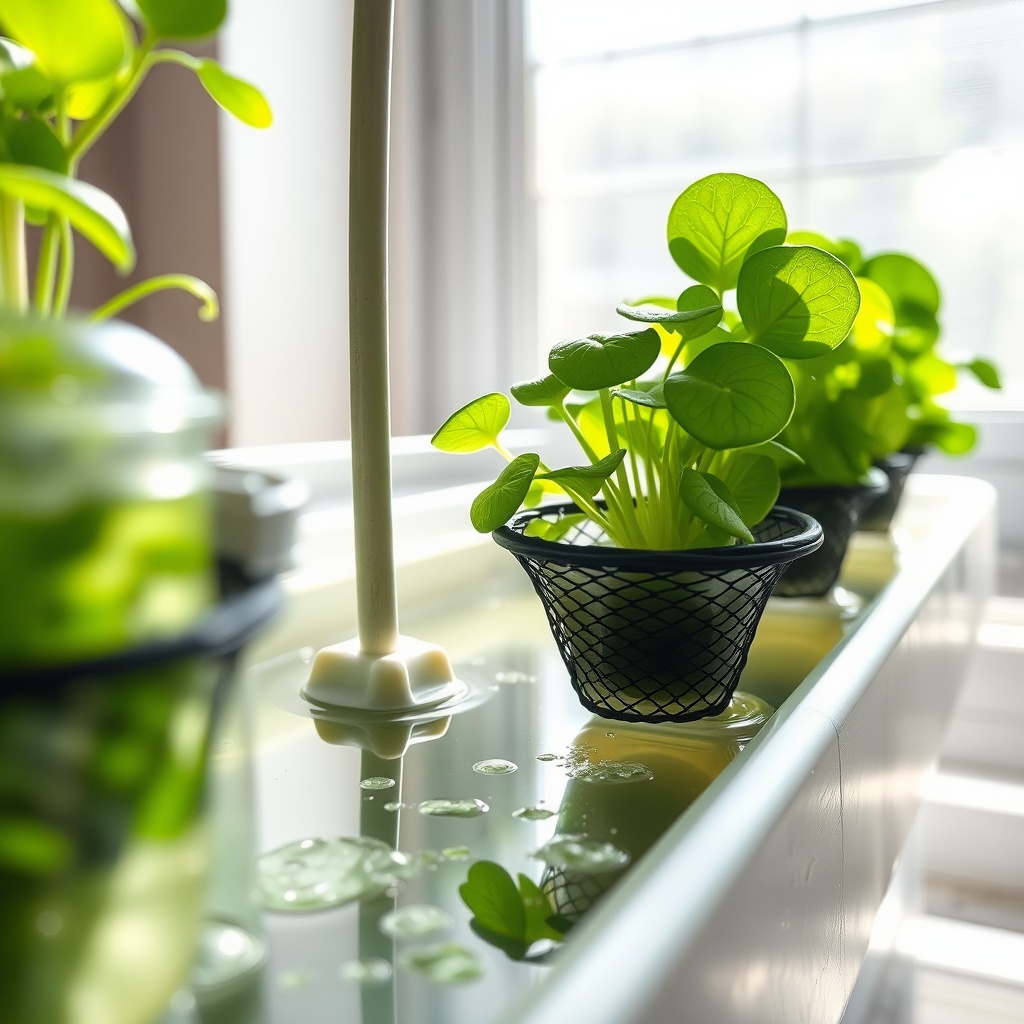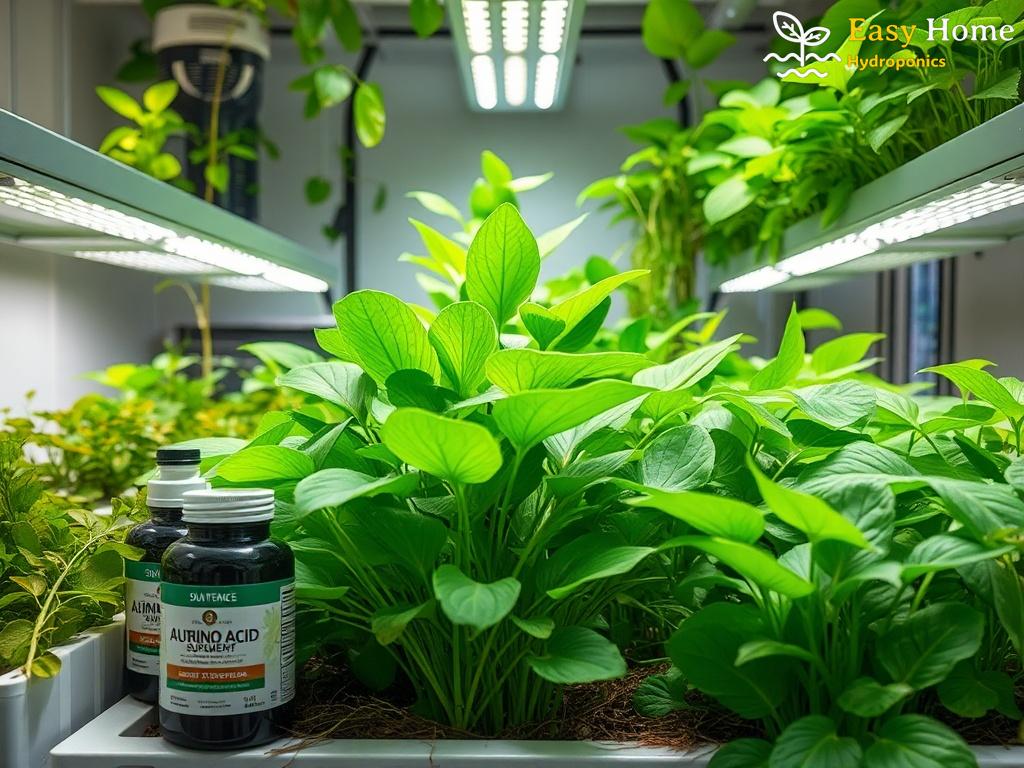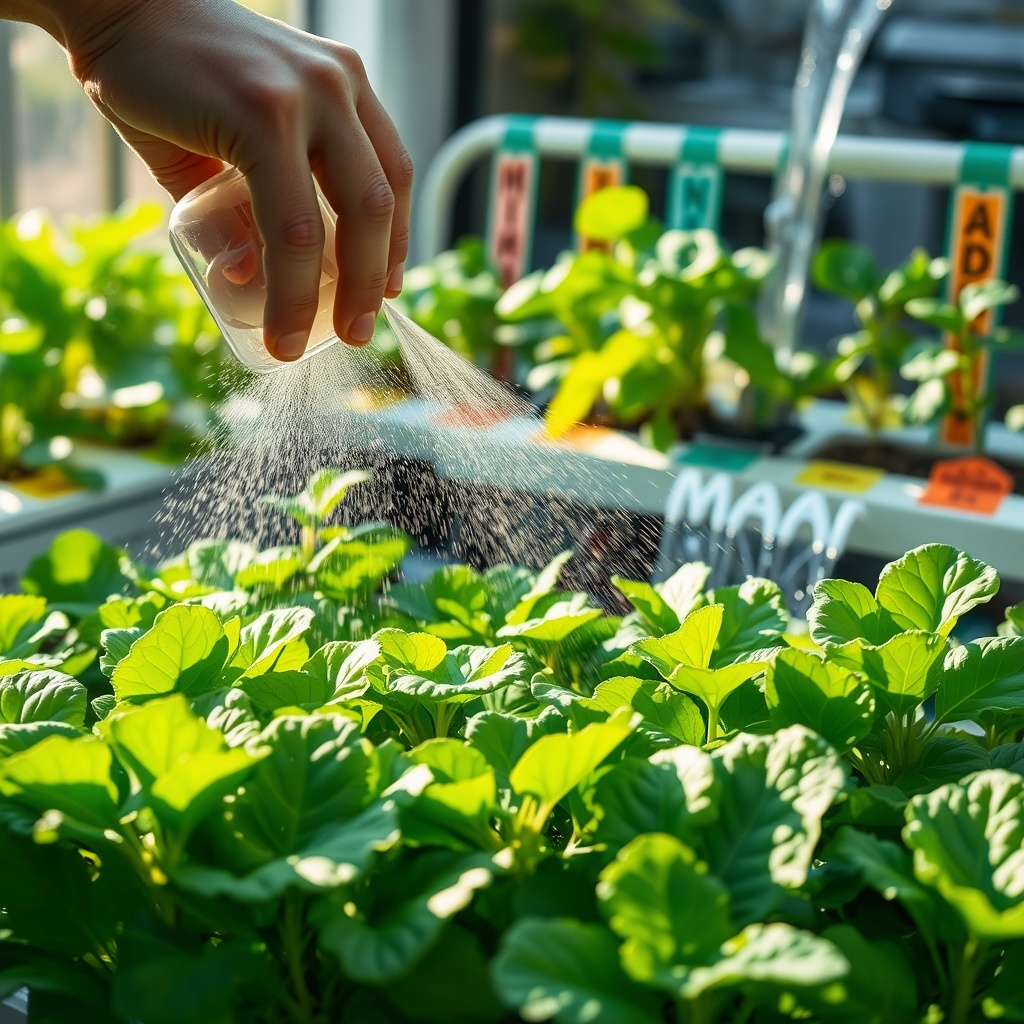Unlocking the Secrets: Essential Nutrients for Hydroponic Success
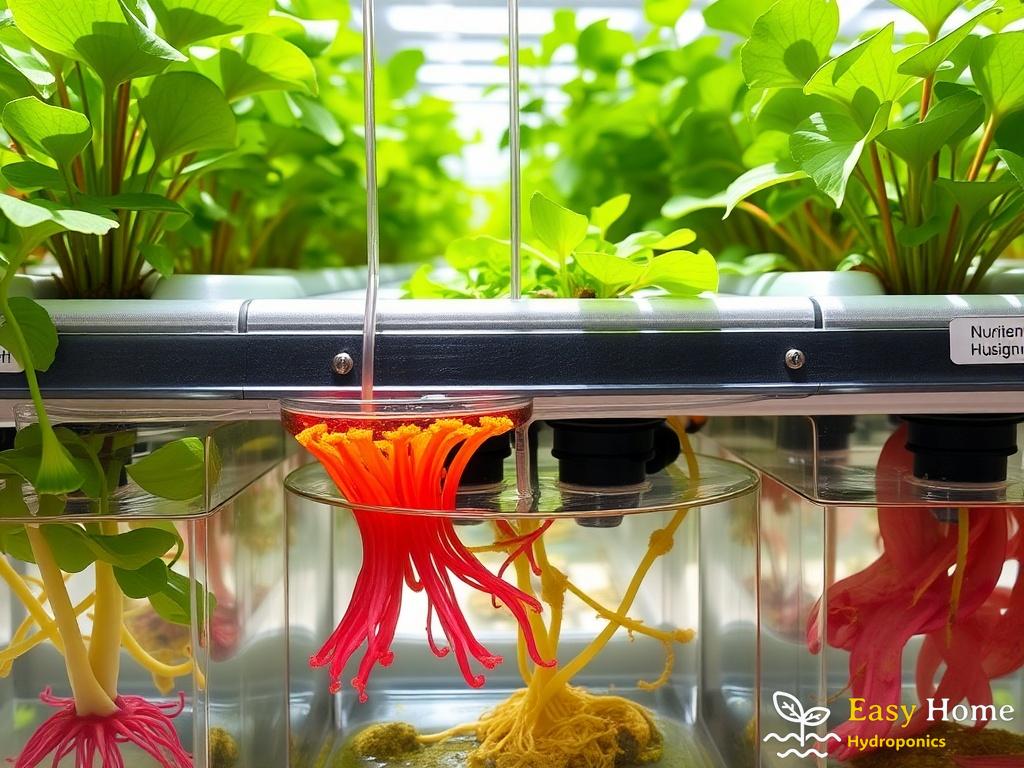
In the world of hydroponics, the delicate balance of nutrients can make or break your plant’s success. Understanding the essential nutrients that aquatic plants need is crucial for any home grower looking to maximize yield and health. This article delves into the fundamental nutrients that form the backbone of hydroponic success, unraveling the mysteries that can lead to flourishing plants.
When it comes to nutrient management, three macronutrients reign supreme: nitrogen, phosphorus, and potassium. These essential elements play unique roles in plant growth, and knowing how to balance them can significantly impact your hydroponic garden.
- Nitrogen (N): Vital for leaf growth and overall plant vigor, nitrogen is a key player in photosynthesis. A deficiency can lead to yellowing leaves and stunted growth.
- Phosphorus (P): Essential for root development and energy transfer, phosphorus is crucial during the flowering stage. Without it, plants may struggle to produce fruit.
- Potassium (K): This nutrient is critical for water regulation and enzyme activation, contributing to overall plant health and disease resistance.
While macronutrients steal the spotlight, trace elements are equally important in ensuring your plants thrive. These micronutrients, such as iron, manganese, and zinc, may be required in smaller quantities, but their impact is undeniable.
| Trace Element | Function | Deficiency Symptoms |
|---|---|---|
| Iron | Essential for chlorophyll production | Interveinal chlorosis (yellowing between veins) |
| Manganese | Involved in photosynthesis and nitrogen metabolism | Dark spots on leaves and chlorosis |
| Zinc | Crucial for growth hormone production | Stunted growth and leaf curling |
Creating a balanced nutrient solution tailored to your plants’ needs is the key to hydroponic success. Begin with a high-quality hydroponic nutrient mix, and consider factors such as water quality and pH levels. Regularly monitor and adjust your nutrient solution to ensure optimal absorption and growth.
The Art of Balance: pH and Nutrient Interactions Explained
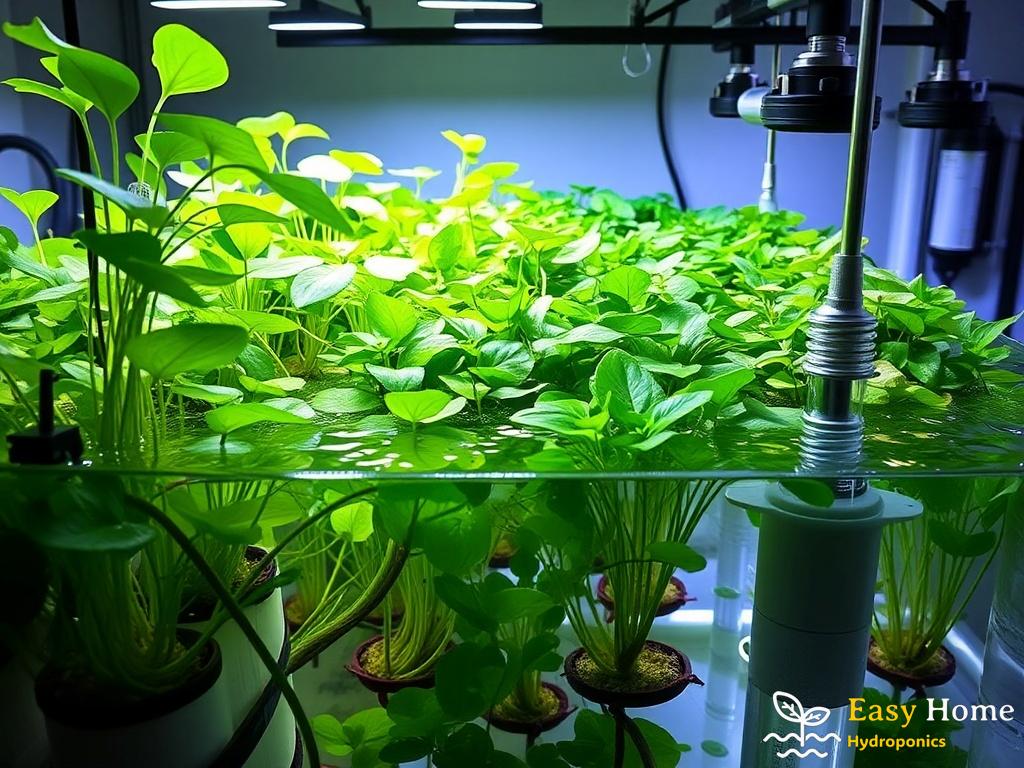
In the intricate world of hydroponics, pH levels serve as a crucial foundation upon which nutrient availability rests. Understanding how pH influences the absorption of essential nutrients will empower home growers to cultivate healthier, more productive plants. The ideal pH range for most hydroponic systems typically hovers between 5.5 and 6.5. Straying too far from this sweet spot can lead to nutrient lockout, where plants are unable to absorb vital elements, ultimately stunting their growth. It’s not merely a number; it’s the key to unlocking your plants’ potential.
The relationship between pH and nutrient availability can be likened to a delicate dance, where each movement affects the other. For instance, at higher pH levels, the solubility of certain micronutrients, such as iron and manganese, diminishes significantly. This can result in visible symptoms of deficiency, such as yellowing leaves or poor root development. Conversely, at lower pH levels, nutrients like ammonium nitrogen can become overly available, potentially leading to toxicity. Thus, monitoring and adjusting your pH level is not just a routine task; it is essential for promoting the optimal interactions between different nutrients that aquatic plants crave.
To master the art of pH management, one must employ several strategies that ensure a stable and suitable environment for nutrient absorption. Regular testing of the nutrient solution is essential; utilizing reliable pH meters or test strips can help detect fluctuations before they become problematic. Additionally, introducing pH adjusters like phosphoric acid or potassium hydroxide can help fine-tune the levels when necessary. Another effective method is to utilize live plants or beneficial bacteria that can naturally help buffer pH changes over time. Remember, a well-balanced nutrient solution is not just about what you add, but also how well you maintain the environment in which your plants thrive.
Tailoring Nutrient Solutions: Custom Blends for Aquatic Plants
In the dynamic ecosystem of hydroponics, one size does not fit all when it comes to nutrient solutions. Different aquatic plants possess unique nutritional requirements that can dramatically influence their growth, vigor, and yield. By tailoring nutrient blends to cater to specific plant types, home growers can unlock the full potential of their hydroponic gardens. This article explores the art of crafting custom nutrient solutions, ensuring that your plants receive the precise nourishment they need to thrive.
Before diving into the world of custom blends, it’s essential to understand the specific needs of the aquatic plants in your care. Factors such as species, growth stage, and environmental conditions play a crucial role in determining nutrient requirements. Regularly observing your plants and identifying signs of nutrient deficiency or excess will guide you in adjusting your custom solution effectively.
Creating a bespoke nutrient solution involves balancing macronutrients and micronutrients to meet the specific demands of your plants. Below is a succinct list of key components to consider when formulating your custom blend:
- Macronutrients: These include nitrogen, phosphorus, and potassium, which are crucial for overall growth, root development, and energy transfer.
- Secondary Nutrients: Calcium, magnesium, and sulfur support various physiological functions and should not be overlooked.
- Micronutrients: Elements like iron, manganese, and zinc, even in trace amounts, are vital for enzyme function and metabolic processes.
- pH Adjusters: Incorporate substances to maintain the ideal pH range, ensuring nutrient availability is maximized.
Crafting your nutrient blend starts with a high-quality base mix, after which you can adjust the components according to the needs of your plants. Testing and refinement are your allies in this process; don’t hesitate to experiment with ratios until you discover what works best for your hydroponic setup.
The journey does not end once your custom blend is prepared. Ongoing monitoring of your nutrient solution is critical for maintaining a healthy hydroponic environment. Regularly check the pH levels, electrical conductivity, and visual signs of plant health. Adjustments may be necessary as plants transition through different growth stages or as environmental conditions change. A proactive approach will ensure that your aquatic plants remain nourished and vibrant, leading to a bountiful harvest.
Feeding Frequency: Timing Your Nutrient Delivery for Maximum Growth
In the quest for hydroponic excellence, timing is everything. Just as a well-composed symphony requires each instrument to play its part at the right moment, so too does your nutrient delivery system need to harmonize with the growth stages of your aquatic plants. The feeding frequency you choose can significantly affect the health and yield of your plants, making it a crucial component of your nutrient management strategy. Understanding the unique metabolic needs of your plants during different growth phases allows you to tailor your feeding schedule for optimal results.
Establishing an effective feeding frequency involves observing not just the general needs of your plants, but also their specific responses. During the early stages of growth, when your plants are developing roots and foliage, a frequent feeding schedule can provide the consistent supply of nutrients they crave. This could mean delivering nutrients every few days, allowing for robust growth. As your plants enter their flowering or fruiting stages, however, they may require different nutrient concentrations and possibly less frequent feeding. This adjustment is essential, as over-fertilization can lead to nutrient burn or other detrimental effects.
Moreover, environmental factors play a significant role in nutrient absorption. Temperature, humidity, and light levels can all influence how quickly plants metabolize nutrients. By closely monitoring these variables, you can fine-tune your feeding frequency to ensure that your plants receive nutrients when they are most capable of absorbing them. It’s a delicate balance of science and intuition, where you become attuned to the needs of your plants and adjust accordingly.
Regular observation is key to mastering feeding frequency. Watch for signs of nutrient deficiency or excess, such as leaf discoloration, stunted growth, or wilting. These visual cues can guide you in adjusting both the timing and concentration of your nutrient solutions. Additionally, consider developing a log to track your feeding schedule and the plants’ responses over time. This record will become an invaluable tool in identifying patterns and optimizing your nutrient delivery strategy. With patience and diligence, you will cultivate not only healthy plants but also a deeper understanding of their unique needs.
Troubleshooting Nutrient Deficiencies: Signs and Solutions
Hydroponic gardening can often feel like a delicate balancing act, where a small miscalculation can lead to a cascade of issues. Nutrient deficiencies can stealthily undermine your plants’ health, manifesting through a variety of visible signs. Recognizing these symptoms is the first step in troubleshooting, allowing you to swiftly intervene and correct the nutrient imbalance before it escalates. Each deficiency not only affects growth but can also impact the overall yield, making it crucial to stay vigilant.
Understanding the specific signs associated with nutrient deficiencies can empower you to take timely action. Below is a table summarizing some of the most common deficiencies, their symptoms, and actionable solutions to rectify the situation:
| Nutrient | Deficiency Symptoms | Solutions |
|---|---|---|
| Nitrogen (N) | Yellowing leaves, particularly older leaves, with stunted growth. | Increase nitrogen levels in your nutrient solution; consider using high-nitrogen fertilizers. |
| Phosphorus (P) | Purple or darkened leaves, poor root development, and delayed flowering. | Apply a phosphorus-rich nutrient mix; ensure adequate pH levels for absorption. |
| Potassium (K) | Burnt leaf edges, wilting, and weak stems. | Incorporate potassium supplements into your nutrient solution; monitor water quality. |
| Iron (Fe) | Chlorosis (yellowing) between leaf veins, particularly in younger leaves. | Introduce iron chelates; adjust pH to enhance iron availability. |
| Zinc (Zn) | Leaf curling and reduced growth; chlorosis in young leaves. | Implement zinc supplementation; consider foliar sprays for immediate relief. |
While recognizing and addressing deficiencies is critical, prevention is the ultimate goal in nutrient management. Establishing a consistent monitoring routine can help you identify imbalances before they impact plant health. Regularly testing your nutrient solution, adjusting pH levels, and maintaining a balanced nutrient profile are all essential practices. Additionally, keeping a detailed log of your plants’ responses to various nutrient solutions can provide insights that refine your approach over time.

